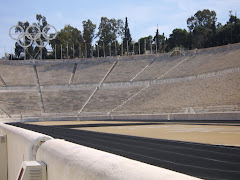On Oct.16, 1968, in Mexico City, three Olympians became global icons.
In the decades since, the medals won by Team USA's Tommie Smith and John Carlos, with Australia's Peter Norman -- and their actions during the ceremony while officials hoisted the "The Star-Spangled Banner" -- were revisited and replayed countless times through film, broadcast specials, print media and, eventually, online.
Now for the first time, Smith's life and gold medal feat have gotten a graphic novel treatment on the pages of "Victory. Stand! Raising My Fist for Justice" co-created with best-selling author Derrick Barnes and award-winning comic artist Dawud Anyabwile.
Just days following its Sept. 27 release, the book earned a contender spot as finalist for the 2022 National Book Award for young people's literature, with other accolades via The New York Times Book Review and Atlanta Journal-Constitution. Much like Smith's on-track surge to set a 200m world record, "Victory. Stand!" and its compelling messages are likely to capture gold.
The 208-page glossy volume opens at the starting blocks of the Olympic track but quickly pivots to Smith's hardscrabble childhood with 11 siblings in rural Texas.
Readers learn Smith's memories of stern and faithful parents, who eventually relocated the family to California as part of the Great Migration. Through the first two chapters (about 100 pages) the narrative toggles from youthful observations back to the on-track action, relating childhood milestones as context for Mexico City's play-by-play.
At a book signing event in an activities room of Atlanta's historic Ebenezer Baptist Church last week, about 50 attendees listened as Anyabwile, Barnes and Smith share details of their creative process, which commenced in 2018, in step with a High Museum of Art exhibition honoring 50 years since Mexico City.
Barnes, who previously wrote over 10 youth books including "The King of Kindergarten" and "Crown: An Ode to the Fresh Cut," described Smith's "excited conversations like an uncle telling a great story" at Smith's home, later inspiring Barnes to engage an illustrator selection process.
Anyabwile was a natural No. 1 choice given his Cartoon Network and other Turner Studios accolades as well as previous artistic expertise on another Olympian-centric graphic novel in 2020, "Becoming Muhammad Ali."
Both the illustrator and writer said they grew up with photos or posters of Smith as "a fixture without context" and the collaboration "added context to [Smith's] family life and upbringing."
During the signing portion of last week's event, I asked Anyabwile the most challenging aspect of the project to illustrate, and he turned to Chapter Two's double truck opener portraying horrors of racism from hooded KKK members with torches igniting a cross to a lynched father, an indication this book for young readers does not sugarcoat the many struggles for Blacks before, during and since the Civil Rights Movement. Should this book include a "parental guidance" suggestion, I wondered, as several pages portray adult decisions.
But part of the point to the book, Barnes stated, is to inspire family conversations. And "Victory. Stand!" does encourage thoughtful discussion of history, racism, faith, focus and when, where and how to take a meaningful stand for what's right.
Later study of Anyabwile's beautiful images also yielded a full-page celebration of Queta Basilio, the Team Mexico Olympic hurdler chosen as the first woman to ignite the Olympic cauldron. Other Olympians including Bob Beamon and LeBron James also enjoy Anyabwile's excellent artistry, which he explained is drawn electronically.
For this blogger the most compelling section of "Victory. Stand!" is Chapter Three's "Metamorphosis" of Smith from small town athlete to Olympic and world record contender while studying at San Jose State University. Though I met Smith hours after his 2016
White House visit and later interviewed him
at the High, later watching documentaries or reading more about his silent protest, these previous interactions did not fill in the blanks as to his
becoming Tommie Smith.
Reading "Victory. Stand!" also added context to the Olympic Project for Human Rights of which Smith was a key participant. The book draws attention to the International Olympic Committee's hardline stance against protests and comes full circle with contemporary athlete protests inspired by Smith's stand.
Unavoidable-for-me Nick-, er, nitpicking, did yield minor errors I think occurred only by accident in the illustration process, or via honest copy editor mistakes. One page highlighting the 1968 Olympic Trials includes the jumbo screen installed at Los Angeles Memorial Coliseum in 1984 but no Olympic cauldron of 1932, the latter perhaps omitted for the scene to fit the page.
Also, Basilio's torch and cauldron moment have no flames, and the medal stand on which Smith and Carlos raised their gloved fists is drawn with erroneous Olympic rings that are "smushed" or "crowded" horizontally linking what would be blue-black-red and/or yellow-green rows. The rings appear correctly in other two- or three-dimensional images throughout the book.
Readers will likely savor the variety of comic techniques from intricately drawn "ink" splatters to fine lines and detailed Ben Day dots. I am eager to read other works by the trio of authors.
As the audience Q&A wrapped, I asked Smith when he thought a turning point occurred in the public's perception of his human rights salute. His response did not acknowledge a specific time nor date range, but he said that at the U.S. Olympic and Paralympic Committee's recently installed leadership "women turned it" and from his vantage the IOC still has not.
"Still battling. A continual battle," Smith said.
Image credits: Book cover via W.W. Norton & Co. Other images by Dawud Anyabwile inside "Victory. Stand!" Book event photos by Nicholas Wolaver except the group photo below snapped, with Wolaver's thanks, by Delois Jordan Smith.


































.jpg)



































